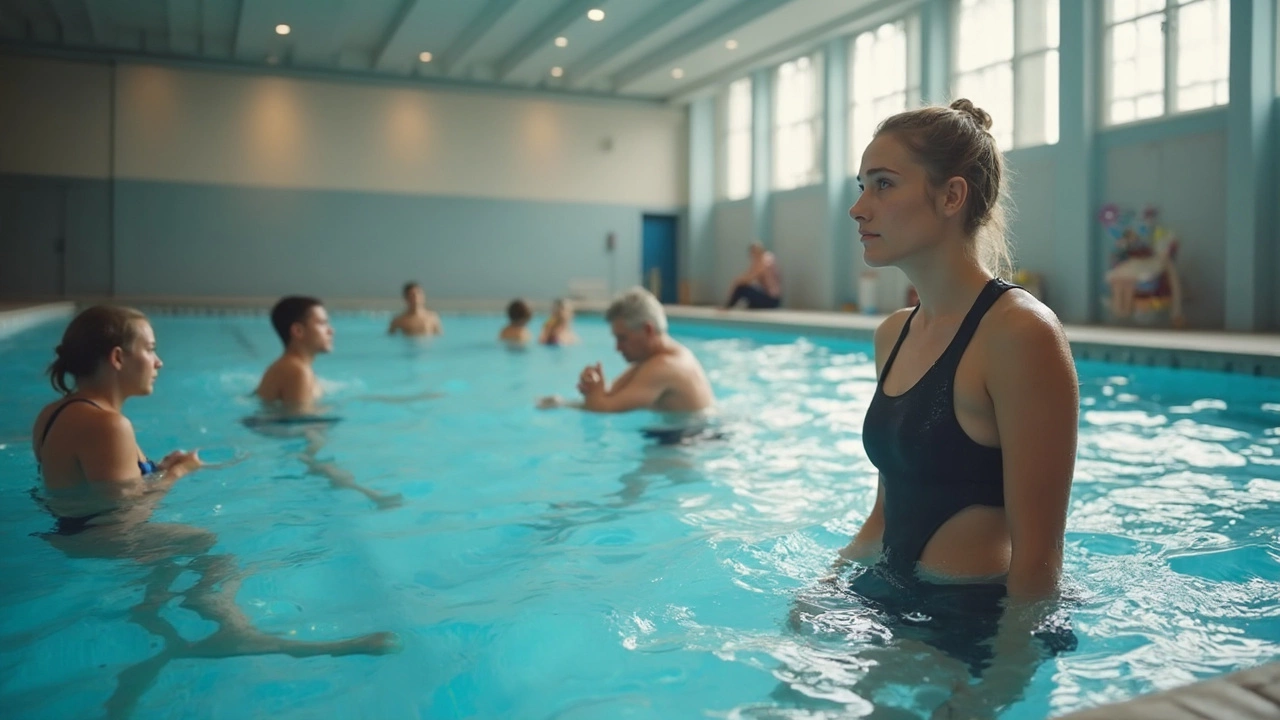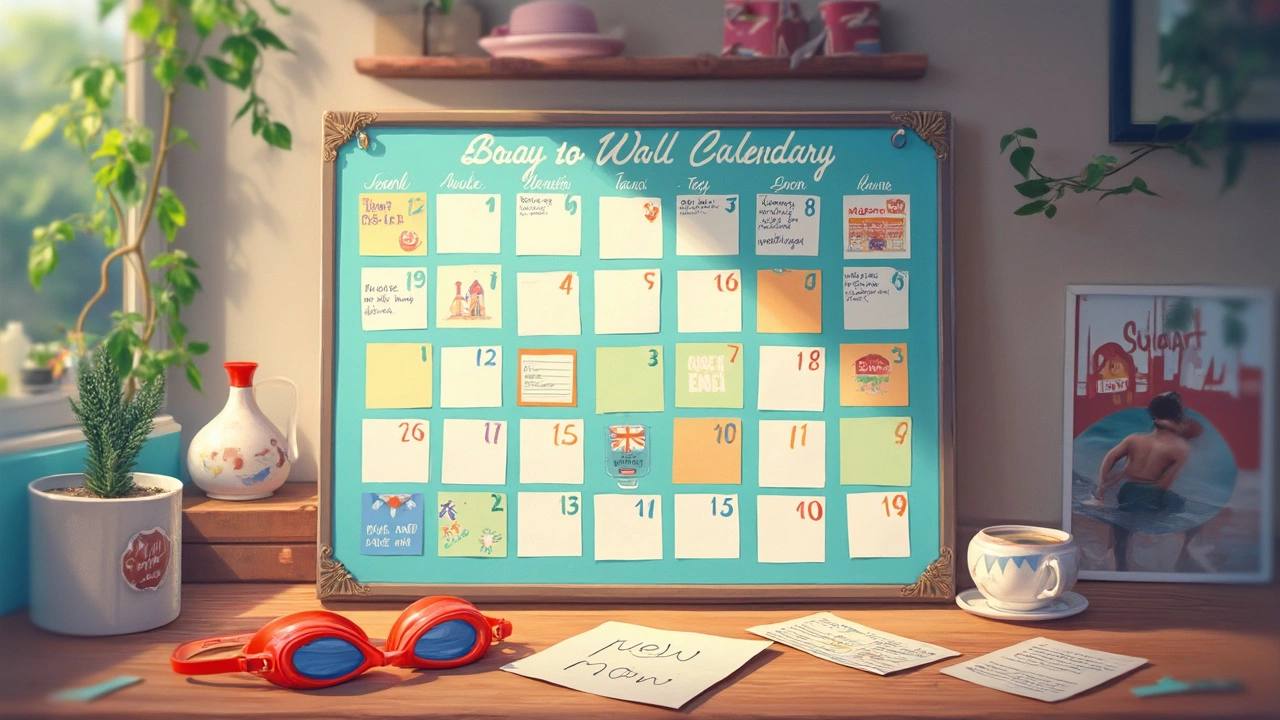How Often Should a Beginner Swim? Smart Schedules for Starting Out

Diving into swimming for the first time can feel weirdly overwhelming. Maybe you're picturing yourself gliding across the pool, but your arms and legs have other ideas—trust me, that's totally normal. When it comes to how often you should actually swim as a beginner, quality matters more than trying to show up at the pool every single day.
Most coaches recommend aiming for two or three sessions a week. That’s enough for your body to remember what you’re learning, but not so much that you end up wiped out or frustrated. It also gives your muscles time to recover (because they will be sore at first, especially around your shoulders and core!). The key is to make every swim count—don't just splash around; set a simple goal for each session, even if it’s something small like mastering your breathing or floating for a few seconds without panicking.
If you try to swim every day right away, your energy drops fast and you risk getting over it before you get better. Instead, think about building a steady routine that fits real life: school, work, family stuff—it all counts. The best swimmers aren't the ones who do marathon sessions; they're the ones who actually show up, stay patient, and stick with it long enough to see progress.
- How Often Is Enough When You’re Just Starting?
- Listen to Your Body: Rest and Recovery Matter
- Making Progress: What to Expect in the First Month
- Tips to Stay Motivated and Consistent
How Often Is Enough When You’re Just Starting?
If you're just jumping in, the sweet spot for beginner swimming is right around two to three times a week. This isn't random. Coaches and trainers agree that swimming this often gives your body enough practice to gain confidence without feeling wiped out. The days between swims give your muscles and joints a chance to recover—super important if you don’t want to burn out or get an annoying injury.
For most people, sticking to this swimming frequency for the first month or two is the way to go. You’ll remember what you learn from one swim lesson to the next, and each session will feel a bit easier. Trying to go daily? That’s way too much for most beginners, both mentally and physically. On the other hand, if you only go once a week, you’ll probably spend more time re-learning stuff than getting better at it.
Want to see what a starter swim routine might look like?
- Week 1-2: Swim twice a week for 30-40 minutes. Focus on basics like floating, kicking, and getting comfortable putting your face in the water.
- Week 3-4: Bump it up to three times a week if you feel good—still around 30-40 minutes per session. Start adding short laps and simple breathing drills.
Here’s a quick look at why this pace works:
| Sessions per Week | Progress | Injury Risk |
|---|---|---|
| 1 | Slow (lots of forgetting) | Low |
| 2-3 | Steady and solid | Very Low |
| 4+ | Faster, but risky | Goes up, especially for shoulders |
So, don’t stress about swimming every day. Instead, just focus on making those two or three sessions count. Bring questions for your coach, try to remember one new thing each time, and watch for little wins like floating longer or swimming farther without stopping.
Listen to Your Body: Rest and Recovery Matter
It’s easy to think that swimming more often means you’ll get better faster. But here’s the thing: for beginner swimming, recovery is just as important as practice. When you first hit the pool, your muscles are getting used to new movements—you’re pushing and pulling in ways you probably don’t on land. So, soreness after your first few swims? Totally normal.
Here’s a secret most new swimmers miss: your body actually gets stronger during rest, not when you’re swimming laps. When you rest, muscle fibers repair themselves, joints recover, and your brain processes what you just learned. If you skip rest days, you risk injuries like sore shoulders, swimmer’s knee, or just plain exhaustion. A good rule is to space out your swim lessons with at least one day off in between sessions, especially in your first month.
How do you know if you’re swimming too much? Look for red flags like:
- Feeling more tired after each session instead of more energetic
- Pain (not just soreness) in your shoulders, neck, or lower back
- Worsening swim technique—maybe your form falls apart because you’re wiped out
- Trouble sleeping or feeling cranky
If any of these pop up, it’s time to step back and pace yourself. Sometimes you need to swap a swim day for some stretching or a gentle walk. And yes, that still counts as doing something good for your swimming frequency and progress.
Here’s a quick look at typical recovery times for beginners:
| Session Intensity | Recommended Rest |
|---|---|
| Light (short swims, easy pace) | 1 day |
| Moderate (focused lessons, learning new skills) | 1-2 days |
| Challenging (lots of drills, long sets) | 2 days |
Bottom line: listen to your body. If you feel good, stick to your schedule. If you’re dragging or hurting, take an extra day off—future you will thank you for it. This careful balance is how you get the most benefit from your swim tips and actually start loving the water, not dreading it.

Making Progress: What to Expect in the First Month
The first month of beginner swimming is all about getting comfortable and building basics, not breaking records. If you’re swimming two or three times a week, you’ll start to notice changes almost right away—even if it just means feeling less awkward in the water or not gasping for air after one lap.
Usually, the big focus in your first four weeks is on technique and confidence. Most people spend their time learning to float, kick comfortably, and breathe without swallowing water. Mastering these skills early makes everything else so much easier. Don't stress about speed—form is what matters most at this point. If you’re taking swim lessons, your coach might have you move from holding onto the pool edge to gliding with a kickboard, or trying a proper freestyle arm pull by the end of the month.
Here’s what often improves in the first month for most beginner swimming students:
- Comfort in water: First week or two might feel weird, but most beginners get noticeably less anxious by session four or five.
- Breathing: Practice helps reduce that out-of-breath feeling. By week three, a lot of people find they can swim one or two pool lengths without stopping.
- Kick technique: Stronger, straighter legs after a few sessions. You’ll waste less energy splashing and move a little quicker.
- Body position: More practice means you float better and don’t sink so easily. Most see big changes here before the end of the month.
Want some numbers? A small study from the Swimming Teachers’ Association in the UK found that most new swimmers can float and swim five meters by the end of their first month, especially with two or more practices per week (no matter their age!). The milestones look different for everyone, but these are super common:
| Skill | Typical Progress in 4 Weeks |
|---|---|
| Floating on Back | 60% of beginners can relax and float for 10+ seconds |
| Kicking With Board | 70% can kick across a 10-meter pool |
| Breathing Under Control | 50% swim a pool length with controlled breathing |
Stick with a regular swimming frequency—don’t compare yourself to others or rush the process. Tiny wins each week add up way faster than you expect. And if you feel totally lost one day, just remember, everyone looks a little silly in their first month at the pool. That’s how you end up getting better.
Tips to Stay Motivated and Consistent
Sticking to a new swimming routine isn't always easy, especially when your arms ache or you just don’t feel like heading to the pool. Most beginner swimming goals fizzle out because people lose motivation before seeing real progress. The good news? You can hack your habits a bit and set yourself up for wins, even on the rough days.
The American Council on Exercise found that people who track their progress with a journal or app are up to 42% more likely to stay consistent. Small wins—like shaving a second off your lap or swimming one extra length—add up faster than you think.
- Pick a set schedule and stick to it. Same days and times each week make it a routine, not a question.
- Swim with a buddy or join a group. Having someone expecting you keeps you honest and actually makes it more fun.
- Mix things up to fight boredom. Alternate strokes, change the order of your drills, or listen to waterproof headphones (yes, they’re a thing!).
- Celebrate the small stuff. Maybe you finally figured out how to do a full lap without stopping—give yourself credit. Treat yourself with something simple, like your favorite snack or an episode of your go-to show.
Don’t expect giant leaps every week. Real progress comes in tiny steps. As swim coach Rachel Steadman says:
"Consistency always beats intensity for beginners. Two or three swims a week is plenty, as long as you show up and put in the work."
If you’re one of those people who loves seeing the numbers, check this out:
| Weeks Swimming | Average Improvement* |
|---|---|
| 2 | More steady strokes, less breathlessness |
| 4 | Confident lap swimming, better endurance |
| 8 | Noticeably stronger, more relaxed swimming |
*Based on typical progress for people who stick to a beginner swimming plan 2-3 times per week.
Remember, nobody became a strong swimmer overnight. Focus on showing up, making each session count, and reminding yourself that every beginner struggles at first. That’s part of the process—and why it feels so good when you power through.
